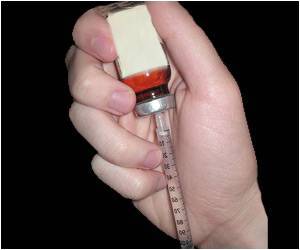Less number of participants who took "RAAS inhibitors" experienced an intracranial aneurysm rupture, comparatively, as per the new study.

‘Blood pressure control, smoking cessation and aggressive treatment of Type 2 diabetes may help decrease the risk of aneurysm rupture.’
Read More..




In a multicenter database counting over 3,000 people with these aneurysms registered in 2016-2021, rupture rates reached 23.4% in RAAS inhibitor users and 76.6% in non-users.Read More..
An aneurysm is a bulging or weakening in the wall of an artery and if this occurs in an artery in the brain, it is known as an intracranial aneurysm. However, when an intracranial aneurysm ruptures, it spills blood around the brain and cuts off oxygen to an affected area, which can cause a hemorrhagic stroke, coma, and or even death.
These strokes account for 3-5 percent of all strokes. Approximately 30,000 adults in the United States have intracranial aneurysms that rupture every year, according to the National Institute of Neurological Disorders and Stroke. Additionally, stroke is a leading cause of disability in the United States.
“Approximately half of the patients with intracranial aneurysms have high blood pressure, which can cause vascular inflammation and increase the risk of aneurysm rupture.
Given that one-third of patients with ruptured aneurysms die and another third remain dependent on daily life activities, there is a need to identify modifiable risk factors to prevent aneurysm rupture,” said the study’s senior author Qinghai Huang, M.D., PhD, professor of neurosurgery at Changhai Hospital, Second Military Medical University in Shanghai, China.
Advertisement
The scientists found that 32 percent of participants who took RAAS inhibitors experienced an intracranial aneurysm rupture, compared to 67% of those who used non-RAAS inhibitors.
Our study highlights that using the proper antihypertensive medications to achieve normalization of blood pressure may remarkably decrease the risk of a ruptured aneurysm,” Huang said.
Women’s risk of aneurysm rupture was 1.8 times higher than men’s risk and the following factors increased the risk of aneurysm rupture: uncontrolled hypertension; exposure to second-hand smoke; and untreated Type 2 diabetes.
“These findings confirm previous studies indicating that–in addition to blood pressure control–smoking cessation and aggressive treatment of Type 2 diabetes may also help reduce the risk of aneurysm rupture.
However, more research is needed to understand how RAAS inhibitors are involved in the prevention of intracranial aneurysm rupture in adults with high blood pressure,” Huang said.
Source-Medindia












